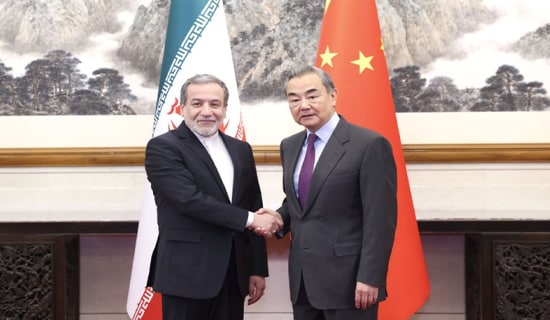Introduction
China-Australia relations hit a new low. On November 30, Chinese Ministry of Foreign Affairs Spokesperson Zhao Lijian published a Tweet depicting a fabricated image of an Australian soldier slitting the throat of an Afghan boy with the accompanying caption, "Don't be afraid, we are coming to bring you peace." Australian Prime Minister Scott Morrison said that China should be "utterly ashamed" for sharing the "repugnant" image.[1] This is just one of the last war of words launched by Beijing against Australia, just few days after Beijing mounted pressure on Australia to curtail its criticism of China, by taking punitive trade measures against Australian wine.

(Source: Facebook.com)
Timeline Of Tariffs In 2020
As Beijing doubles-down on its punitive trade measures, Australian wine seems to be the latest casualty in the deteriorating bilateral relationship. Already, in August 2020 the Chinese Ministry of Commerce launched a preliminary investigation into anti-dumping and anti-subsidy probes on select Australian wines,[2] prompted by complaints that Australian producers had flooded the local market with cheap wine between 2015-2019. At the conclusion of the probe, the Ministry announced that Australian wine exporters have been ordered to pay an "anti-dumping security deposit"[3] of between 107% to 212% on shipments to China.[4] Australian Trade Minister Simon Birmingham rejected the findings of the investigation as "erroneous in fact and in substance"[5] and "incompatible with a rules-based trading system,"[6] signaling that Australia will potentially escalate the decision to the World Trade Organisation.[7]
China's imposition of tariffs against Australian wine is in keeping with its pattern of targeting Australia's agricultural sector over the previous seven months – a sector representing over AUD$60 billion in 2018-2019.[8] The first casualty in the trade dispute was Australian beef, following bans on imports from specific abattoirs in Australia.[9] Shortly thereafter, China suspended barley imports from Australia's largest grain exporter CBH Grain on the basis of environmental concerns.[10] Then in October China verbally ordered cotton mills[11] and coal importers[12] to boycott Australian suppliers. Tariffs against Australia crescendoed in November as China successively expanded the existing ban on barley, arbitrarily introduced new testing and clearance procedures on seafood[13] and timber[14] imports, and applied anti-dumping duties on wine.[15]
China's Precedent For Punitive Trade Measures
Notwithstanding the alarming increase in measures against Australian imports in recent months, this behavior is not without precedent. In February 2019, the port of Dalian in northern China banned imports of Australian coal and its suppliers experienced prolonged clearance times in other major ports around China.[16] This move was widely perceived to be in retaliation for Australia barring Chinese telecommunications companies such as Huawei and ZTE from participating in the construction of Australia's 5G network.[17] This issue remains a point of contention for China, as it resurfaced as one of the "14 Grievances" leaked on November 18 that China claims implicate Australia in "poisoning bilateral relations".[18]
Australia's Options For Recourse
As Australia's largest trade partner for both imports and exports, China's punitive trade measures will predictably harm Australian businesses. However, Australia is not without options for recourse. In the first instance, Australia can appeal the decisions through China's domestic processes. However, previous attempts to appeal tariffs imposed this year have been unsuccessful so far.[19] Australia has indicated that it may escalate its complaint to the World Trade Organization, where the parties may attempt to settle the dispute through a consultations and negotiations.[20] However, the dispute settlement process may take months or years and a final determination would likely be appealed. In the intervening period, China's tariffs will likely inflict significant damage to Australia's wine exports to China – which are worth AUD$1.2 billion annually.[21] Australia would also have to escalate complaints to the WTO for China's measures against the aforementioned assortment of Australian exports.
In recognition of its reliance on trade with China, Australia has astutely cultivated closer trade relationships with other countries and regions in recent years. In 2020 alone, Australia signed free trade agreements with Indonesia, Peru and Hong Kong SAR.[22] Last month, while China was busy sanctioning Australian exports, Australia signed the Regional Comprehensive Economic Partnership with 14 other countries including every ASEAN member state, Japan, India and South Korea - although the agreement is not yet in force.[23] As Australia increases its number of formal trade arrangements within and without the Asia-Pacific region, Australian exporters may more easily find alternative markets to China.
Asymmetrical Pressure
Notwithstanding Australia's options for remediation and salvaging its export markets, Australia will likely feel pressure to acquiesce to Beijing's demands. On November 18 the Embassy of China in Australia leaked a document enumerating "Fourteen Grievances"[24] that allegedly implicate Australia in the deteriorating bilateral relationship. Consistent across all "Grievances" is the implicit message that Australia has wronged China in myriad ways, and Beijing will not tolerate opposition from Australia. "The Australian side is very clear with the crux of the deteriorating bilateral ties. The root cause is Australia's repeated wrong acts and remarks on issues concerning China's core interests and major concerns as well as its provocative and confrontational actions," said Zhao Lijian, spokesperson for the Foreign Ministry.[25] Accordingly, any stance or comment made by Australia that runs counter to that of the Communist Party of China will be met with asymmetrical pressure in response, typically vectored through trade.
Conclusion
After several months of new and expanding tariffs, China's modus operandi is becoming somewhat predictable. Every time Australia takes a public stance critical of China, a Chinese government organ (usually the Ministry of Commerce) targets one of Australia's largest exports, imposes measures against imports of that item, attempts to justify its actions through alleging trade malpractice or biohazard concerns, and builds pressure with the hope of extracting political concessions. However, this strategy is yet to reap any gains for China, since, at the international bilateral level, China has been condemned for attempting to bully Australia into revising its foreign policy towards China.[26]
*Heath Sloane is MEMRI's Chinese Media Studies Project research fellow.
[1] https://www.bbc.com/news/world-australia-55126569
[2] http://www.xinhuanet.com/english/2020-08/18/c_139298936.htm
[3] https://baijiahao.baidu.com/s?id=1684756076817395423&wfr=spider&for=pc
[4] https://dy.163.com/article/FSOS1EKD0519D4UH.html?f=post2020_dy_recommends
[5] https://www.trademinister.gov.au/minister/simon-birmingham/transcript/press-conference-adelaide-1
[6] https://www.trademinister.gov.au/minister/simon-birmingham/transcript/press-conference-adelaide-1
[7] https://dy.163.com/article/FSMRUDHG0534ISW2.html?f=post2020_dy_recommends
[8] https://www.abs.gov.au/statistics/industry/agriculture/value-agricultural-commodities-produced-australia/latest-release
[9] https://www.abc.net.au/news/rural/2020-06-12/abattoirs-still-suspended-from-trading-with-china/12349732
[10] https://www.graincentral.com/markets/export/china-suspends-barley-imports-from-cbh-group/
[11] https://www.scmp.com/economy/global-economy/article/3105751/china-targets-australian-cotton-escalating-trade-dispute
[12] https://www.bilibili.com/read/cv7989894/
[13] https://www.smh.com.au/politics/federal/australian-lobster-exports-feared-latest-victim-of-china-tensions-20201101-p56ak0.html
[14] https://www.theaustralian.com.au/nation/china-ups-trade-ante-with-new-timber-ban/news-story/8a2b367874046b5c4aec62af5e3180f3
[15] https://www.afr.com/politics/federal/australia-calls-out-china-s-trade-thuggery-after-wine-hit-job-20201127-p56ilt
[16] https://www.reuters.com/article/us-china-australia-coal-exclusive-idUSKCN1QA0F1
[17] https://www.reuters.com/article/us-china-australia-coal-exclusive-idUSKCN1QA0F1
[18] https://twitter.com/jekearsley/status/1328986579629613057
[19] https://www.globaltimes.cn/content/1205605.shtml
[20] https://dy.163.com/article/FSMRUDHG0534ISW2.html?f=post2020_dy_recommends
[21] https://www.afr.com/world/asia/china-wine-buyers-brace-for-early-tariffs-on-australian-imports-20201015-p5659p
[22] https://www.dfat.gov.au/trade/agreements/Pages/trade-agreements
[23] https://www.dfat.gov.au/trade/agreements/not-yet-in-force/rcep
[24] https://twitter.com/jekearsley/status/1328986579629613057
[25] See MEMRI Inquiry and Analysis No. 1538, The China-Australia Crisis From China's Perspective, November 25, 2020
[26] https://www.afr.com/politics/federal/us-mocks-beijing-s-threats-against-australia-20201119-p56fyh




